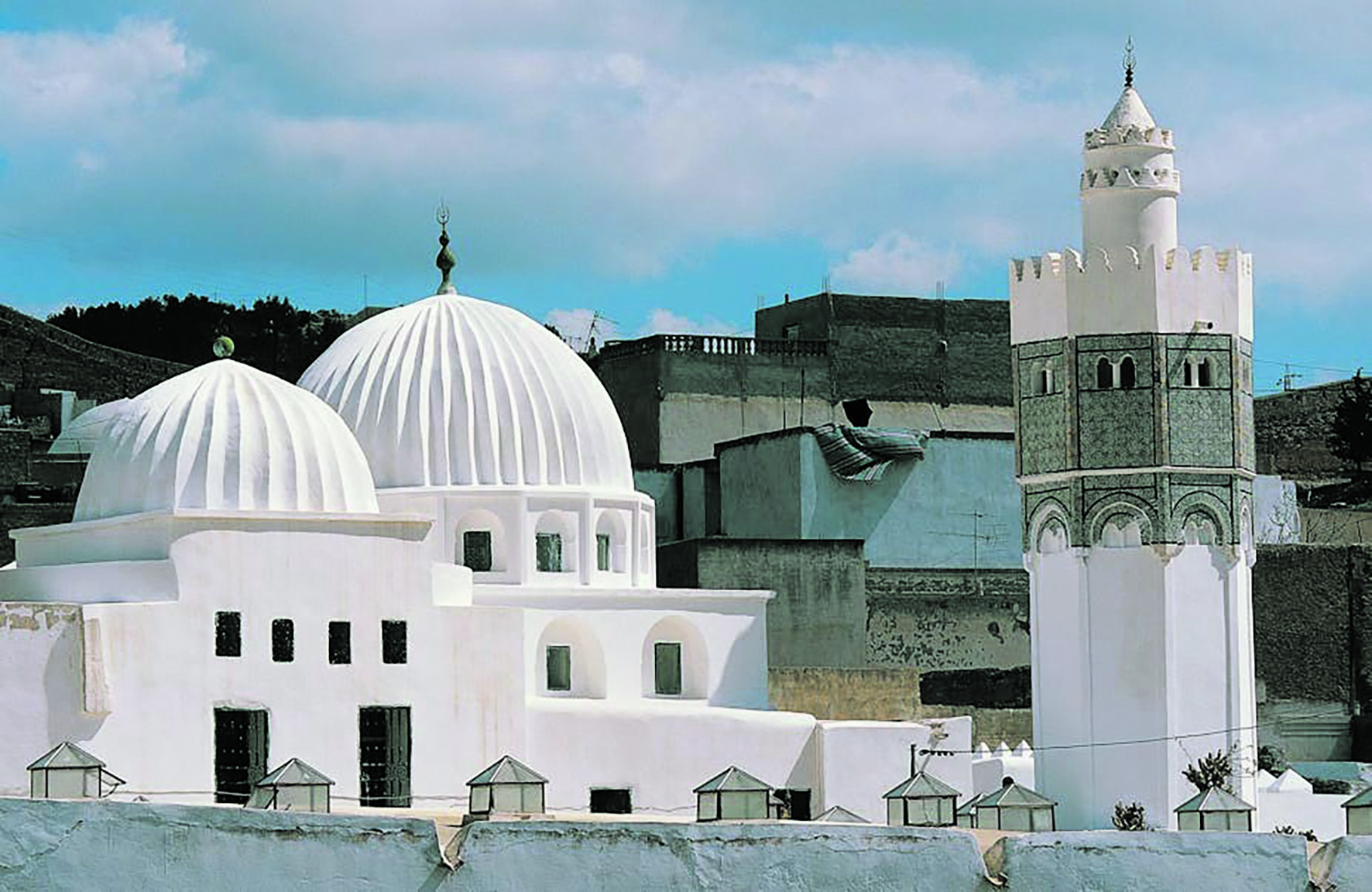![]() El Kef is a city built into the southern face of Jebel Dyr mountain, which is linked to the High Atlas mountains in the north-western region of Tunisia that borders Algeria. The breeze that sweeps off the mountain and through the city’s streets offers relief from the hot weather and becomes part of the identity of a city whose riches are little known to the rest of the world.
El Kef is a city built into the southern face of Jebel Dyr mountain, which is linked to the High Atlas mountains in the north-western region of Tunisia that borders Algeria. The breeze that sweeps off the mountain and through the city’s streets offers relief from the hot weather and becomes part of the identity of a city whose riches are little known to the rest of the world.
El Kef is rarely on the list of tours organised for international visitors who flock to Tunisia every year to enjoy sunny beaches and local culture. The city’s magnificent natural and built heritage is also all but missing from academic research publications.
Tunisia has not recognised the value of El Kef’s historical and cultural diversity, nor promoted the region as an international heritage asset. The city’s festivals for jazz and short film are promoted, but there’s unrealised potential for economic growth and alternative tourism through El Kef’s many heritage sites.
As architects and cultural heritage specialists who teach and conduct research about north Africa more broadly and El Kef specifically, we wish to highlight some of these unrecognised national treasures here.
The city
Because of its steep geography, El Kef has a unique circular pattern with different heights that distinguish ancient and modern urban zones. It has its origins as an ancient Numidian city before it became Roman and Byzantine colonies, beginning in 241BC. It was then an Arab-Islamic medieval centre (688-689) and later fell under Ottoman rule (1700s-1800s) before French colonialism and Tunisian independence. The social, economic and cultural dynamics of this history have left a tangible imprint on the urban environment.
El Kef’s heritage sites, many unrecorded, are evidence of centuries of religious cohabitation, with notable Jewish, Christian and Muslim populations as well as the multitude of Sufi currents. The city was home to renowned
saint Sidi Bou Makhlouf. Through meditation and asceticism, Sufism in Islam (at-taṣawwuf) embraces the philosophy of divine wisdom and love that are present in the world to understand God and the nature of humanity. The growth of Sufism in the 1500s encouraged the building of mausoleums, marabouts and mosques that are now an essential part of El Kef’s cultural landscape.
/file/dailymaverick/wp-content/uploads/2024/04/El-Kef4.jpeg)
From its medieval historical core atop Jebel Dyr to the contemporary grid-layout neighbourhoods, the sloping city’s wide range of architectural styles includes Mediterranean, Roman, Byzantine, Arab/Islamic and colonial influences.
It is history that gives El Kef its distinct identity. Serving as a hub for Tunisian theatrical arts, the city cultivates a blend of tangible and intangible heritage.
The Plateau of Jugurtha
The Plateau of Jugurtha (Jugurta), 70km south of El Kef, is an important natural heritage site, covering 80 hectares and at an altitude of 1,200 metres. It is a mesa (flat-topped mountain) that has been linked to many legends.
The mountain is said to have stopped the Romans in their long war with King Jugurta of Numidia. The Kingdom of Numidia emerged around the 3rd century BC in modern-day Algeria and parts of Tunisia and Libya. Its king, Masinissa, ruled between 201 and 148BC. He is said to have built his first fortress on the mountain in 200BC.
The area was also important during the Aghlabid era (800-909), a period marked by the dominance of this Arab dynasty who once conquered parts of Italy. In other




 The Sidi Bou Makhlouf mosque in El Kef, Tunisia. (Photo: DeAgostini/Getty Images)
The Sidi Bou Makhlouf mosque in El Kef, Tunisia. (Photo: DeAgostini/Getty Images) /file/dailymaverick/wp-content/uploads/2024/04/El-Kef2.jpeg)
